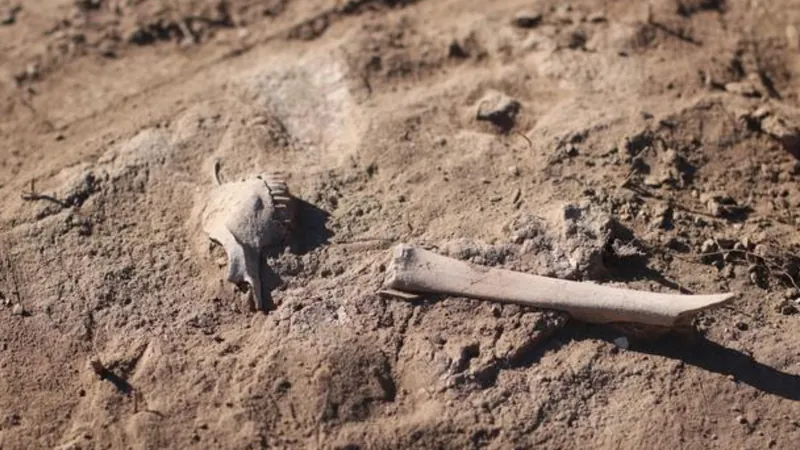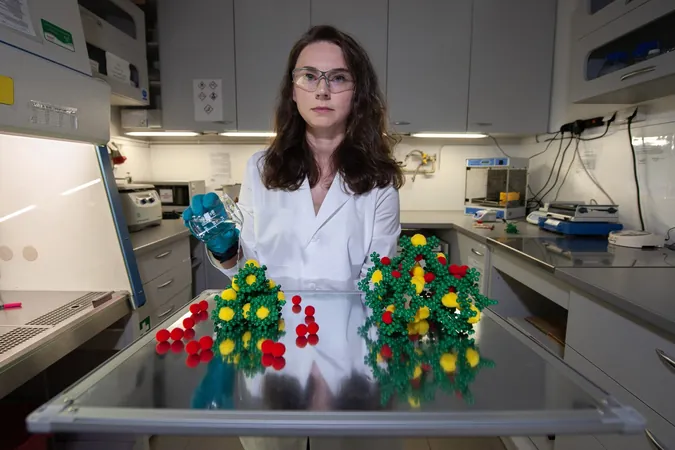
Unveiling the Ancient Plague: How Sheep Traced the Origins of a Deadly Disease
2025-08-11
Author: Ming
Decoding the Ancient Plague Mystery
A groundbreaking new study has cracked open the secrets of an ancient plague that ravaged Eurasia thousands of years ago. Researchers have identified a long-forgotten strain of the plague, known scientifically as Yersinia pestis, found in a 4,000-year-old domesticated sheep.
Linking Livestock to Pandemic Origins
This research marks the first direct evidence revealing how livestock may have played a pivotal role in the spread of this early plague during the Late Neolithic and Bronze Age (LNBA). In collaboration with prestigious institutions like the Max Planck Institute and Harvard University, scientists set out to unveil the mysteries surrounding this ancient disease.
The Enigmatic LNBA Plague
Emerging approximately 5,000 years ago, the LNBA plague lineage vanished just 3,000 years later, leaving experts in the dark about its origins and transmission. Despite studying more than 200 ancient human genomes of Yersinia pestis, the method of transmission for this early strain remained elusive—especially since it didn’t possess the genes required for effective flea transmission, unlike its later counterparts.
Investigating the Sintashta-Petrovka Culture
To solve this ancient riddle, researchers turned their attention to the Arkaim site in Russia, a key location within the Sintashta-Petrovka culture known for advanced animal husbandry, including the raising of sheep, cattle, and horses. It was here that they discovered the infected 4,000-year-old sheep, linking the livestock to the very strain of plague that afflicted humans at the time.
Animal and Human Infection Connection
Dr. Christina Warinner, a leading researcher in the study, highlighted a remarkable finding: 'If we didn’t know it was from a sheep, everyone would have assumed it was just another human infection—it’s almost indistinguishable.' This suggests that both humans and their sheep were contracting the plague from the same environmental source.
Pioneering Insights into Disease Transmission
The research indicates that an unknown wild animal reservoir likely acted as the initial host of the plague, which spread as pastoralist communities increased sheep herding during the Bronze Age. As communities moved their herds, sheep came into closer contact with infected wildlife, paving the way for the disease to spill over into human populations.
Sheep, Wildlife, and Human Interaction
The team explored the probable transmission routes, suggesting that these ancient sheep might have contracted the virus from infected rodents or other wildlife. Improper handling or cooking of the infected sheep could have facilitated the jump to humans, resulting in outbreaks in early human societies.
Reconstructing the Evolutionary Path of Plague
Further genomic analysis allowed scientists to trace the evolutionary history of this ancient plague lineage. Unlike modern strains of plague that exhibit geographical diversity, this extinct lineage showed remarkable consistency across a 6,000-kilometer span. Interestingly, it evolved under unique constraints, indicating different dynamics compared to today's pathogens, such as COVID-19.
What’s Next in Plague Research?
Dr. Felix M. Key, senior author of the study, emphasized the urgency of finding the elusive wild animal reservoir, saying, 'We can show that the ancient lineage evolved under elevated pressure, contrasting it with the Y. pestis still found today. Identifying this reservoir will be critical for understanding early infectious diseases and preventing future outbreaks.'




 Brasil (PT)
Brasil (PT)
 Canada (EN)
Canada (EN)
 Chile (ES)
Chile (ES)
 Česko (CS)
Česko (CS)
 대한민국 (KO)
대한민국 (KO)
 España (ES)
España (ES)
 France (FR)
France (FR)
 Hong Kong (EN)
Hong Kong (EN)
 Italia (IT)
Italia (IT)
 日本 (JA)
日本 (JA)
 Magyarország (HU)
Magyarország (HU)
 Norge (NO)
Norge (NO)
 Polska (PL)
Polska (PL)
 Schweiz (DE)
Schweiz (DE)
 Singapore (EN)
Singapore (EN)
 Sverige (SV)
Sverige (SV)
 Suomi (FI)
Suomi (FI)
 Türkiye (TR)
Türkiye (TR)
 الإمارات العربية المتحدة (AR)
الإمارات العربية المتحدة (AR)